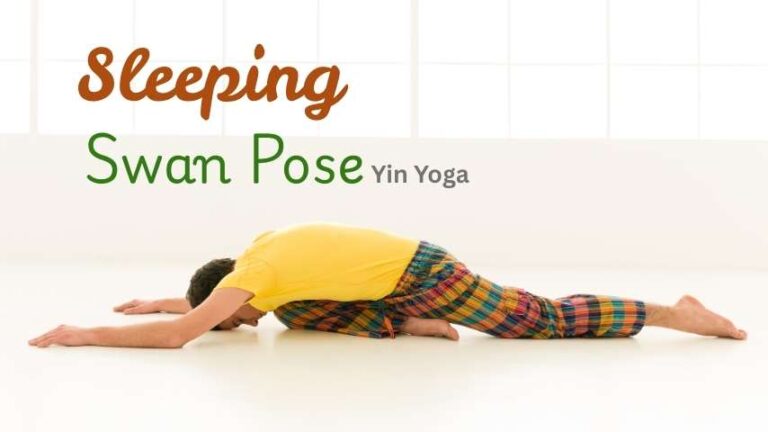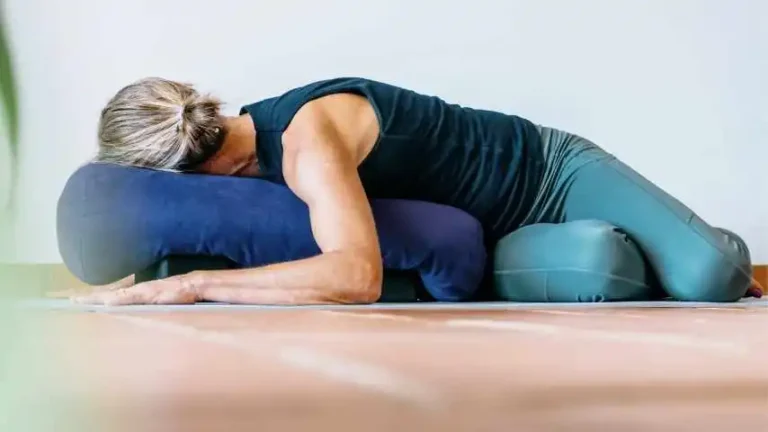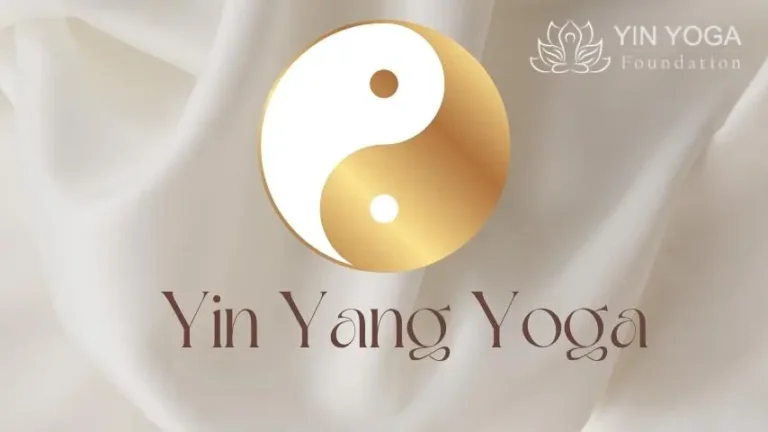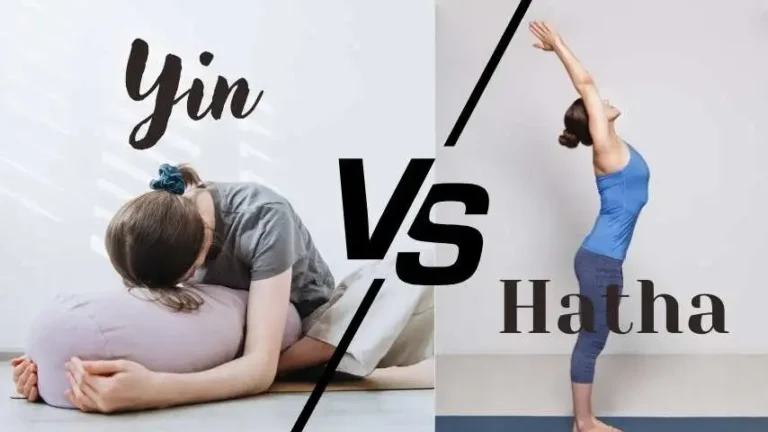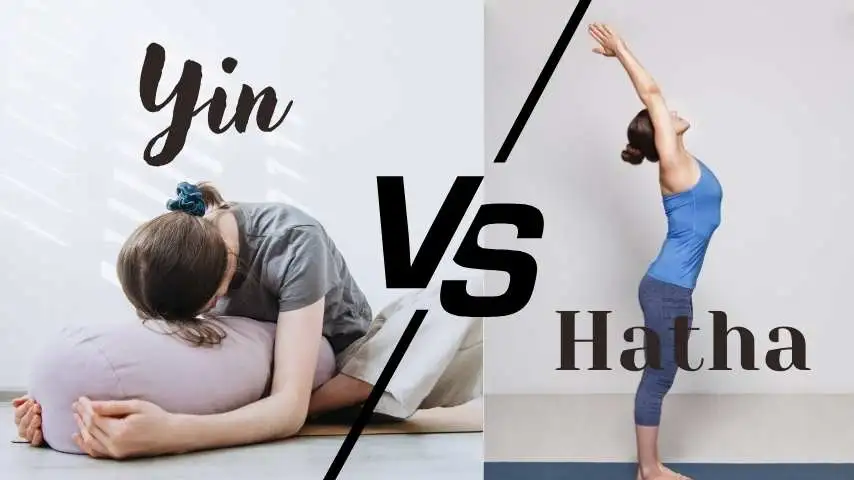
Yin vs Hatha Yoga
There are many types of yoga, each offering unique experiences for the body, mind, and spirit. Yin Yoga and Hatha Yoga are two popular styles. Both promote wellness, balance, and awareness. However, their practice, intent, and effects are quite different.
Understanding the differences between Hatha and Yin Yoga will help you decide which style best suits your lifestyle and goals.
Basics
What is Yin Yoga
Yin Yoga targets the deep tissues in the body, including ligaments, joints, fascia and bones. It involves passive, long-held postures that are typically held for three to five minutes or more.
Yin is inspired by Traditional Chinese Medicine where energy (or Qi) flows through meridians on the body. The practice aims at balancing these energy channels and improving the body’s energy flow.
What is Hatha Yoga ?
Hatha Yoga is a classic form of yoga which focuses on physical poses (asanas), breathing control (pranayama), and sometimes mediation. Hatha Yoga is a more balanced and active practice compared to Yin. It includes standing, seated and supine positions held for 30-seconds to 1-minute.
Hatha is a term that is used in the West to describe any type of physical yoga. It is a holistic practice that prepares the mind and body for spiritual work.
Differences between Hatha and Yin Yoga
1. Pace and Intensity
- Yin Yoga : Slow and passive. This practice promotes minimal muscular involvement and encourages the surrendering of muscles into poses. The deep stretching and long holds can make it feel intense, despite its gentle nature.
- Hatha Yoga : A slower version of Vinyasa and Power Yoga, but with more activity than Yin. You must engage your muscles to maintain poses, concentrate on alignment and control the transitions between postures.
Summary
Hatha is active, balanced and passive.
2. Target Areas
- Yin Yoga targets connective tissues in particular the hips and pelvis as well as lower back. This is designed to gently stress these tissues to improve joint mobility and flexibility .
- Hatha Yoga : It focuses on muscle flexibility, strength, and alignment. energy regulation is also addressed. It is a comprehensive workout.
Summary
Hatha works on muscles, alignment and deep tissues.
3. Breath & Energy
- Yin Yoga : The breath is natural and soft. It’s used to anchor awareness into the present moment. The emphasis is less on formal pranayama.
- Hatha Yoga : Integrates structured breath techniques like Nadi Shodhana and Kapalabhati to balance energy.
Summary – Both styles include breath, but Hatha can include more formal pranayama.
4. Mental Impact
- Yin Yoga promotes emotional release and mindfulness. Long-term holding of poses can bring up suppressed feelings, and improve mental clarity.
- Hatha Yoga : Develops mental focus and calm. It is a form of yoga that creates an internal and external balance.
Summary – Yin has a meditative, emotional quality; Hatha is balancing for the mind and is grounding.
5. Suitable For
- Yin Yoga can be used for:
- Those who need to unwind and slow down
- People with stiff or limited joint flexibility
- Athletes seeking recovery
- People seeking inner calmness or emotional release
- Hatha Yoga can be used for:
- Beginners looking for a accessible, structured practice
- Anyone looking for a well-balanced physical and mental exercise
- People recovering from injury (depending on sequence)
- The foundations of traditional yoga are available to anyone interested.
Yin Yoga and Hatha Yoga: Similarities
Yin Yoga and Hatha Yoga share many similarities, despite their differences.
- Mindfulness : Both styles cultivate awareness and mindfulness of the body.
- Stress Reduction : All can calm down the nervous system to reduce stress.
- Flexibility : They both improve flexibility – Yin in the joints and Hatha in the muscles.
- Accessibility Neither requires advanced skills levels to start.
- Spiritual Foundation Both draw on traditional roots in Eastern philosophy to encourage inner growth.
Combining Yin Hatha and Yin in your Practice
Combining Yin with Hatha creates a practice that is well-rounded. Some classes combine the two, beginning with Hatha poses to warm up the body before transitioning into Yin postures for a deeper release.
Here is an example of a combination session:
- Hatha Yoga with Standing postures, Breathwork and 30 Minutes
- 30 minutes of Yin Yoga with long-held seated poses and supine positions
- Guided meditation or 10-minute savasana
This fusion method supports both (active), and (passive) energy. It promotes holistic well-being.
Final Thoughts on Yin vs. Hatha Yoga
Both Yin Yoga and Hatha Yoga are powerful tools to help you heal and transform yourself. Yin encourages you to slow things down, explore your inner landscape and turn inward. Hatha, on the other hand, focuses on strength, breath control, balance and breathing control.
Instead of viewing them as opposite forces, think of them as complementary paths – Yin, for surrender and stillness and Hatha, for strength and structure. Integrating both styles of yoga into your practice will allow you to experience a more rich and balanced practice. This will nourish your body, calm your mind, connect you with your true self, and help you find your inner peace.
Yin vs. Hatha Yoga – Which Yoga Is Right for You?
| Your Need or Condition | Best Choice | Why |
|---|---|---|
| Complete beginner | Hatha Yoga | Slower pace, easier to follow, foundational poses taught with alignment. |
| Tight muscles or stiff joints | Yin Yoga | Long-held stretches target deep connective tissues, increasing flexibility. |
| Looking to build strength and balance | Hatha Yoga | Engages muscles, builds physical strength, improves posture and coordination. |
| Low energy or feeling exhausted | Yin Yoga | Passive and calming — helps restore energy without physical strain. |
| Dealing with anxiety or stress | Yin Yoga | Encourages stillness, deep breathing, and mental relaxation. |
| Want a traditional yoga experience | Hatha Yoga | Includes asanas, pranayama, and sometimes meditation — based on classical yoga teachings. |
| Post-workout recovery | Yin Yoga | Great for releasing tension from tight muscles and promoting joint health. |
| Prefer active movement and structure | Hatha Yoga | More dynamic than Yin; includes movement between poses and breath control. |
| Exploring emotional release or inner stillness | Yin Yoga | Holding poses for long can bring emotional awareness and deep introspection. |
| Limited time (30–45 mins) | Hatha Yoga | More poses in less time; Yin requires longer holds, so it’s better for slower sessions. |
Can You Practice Both?
Yes! combining Yin with Hatha is the best of both:
- Hatha strengthens and energizes you.
- Yin relaxes and calms you deeply.
Some yoga practitioners switch between the two styles based on their mood, condition or time of the day.


